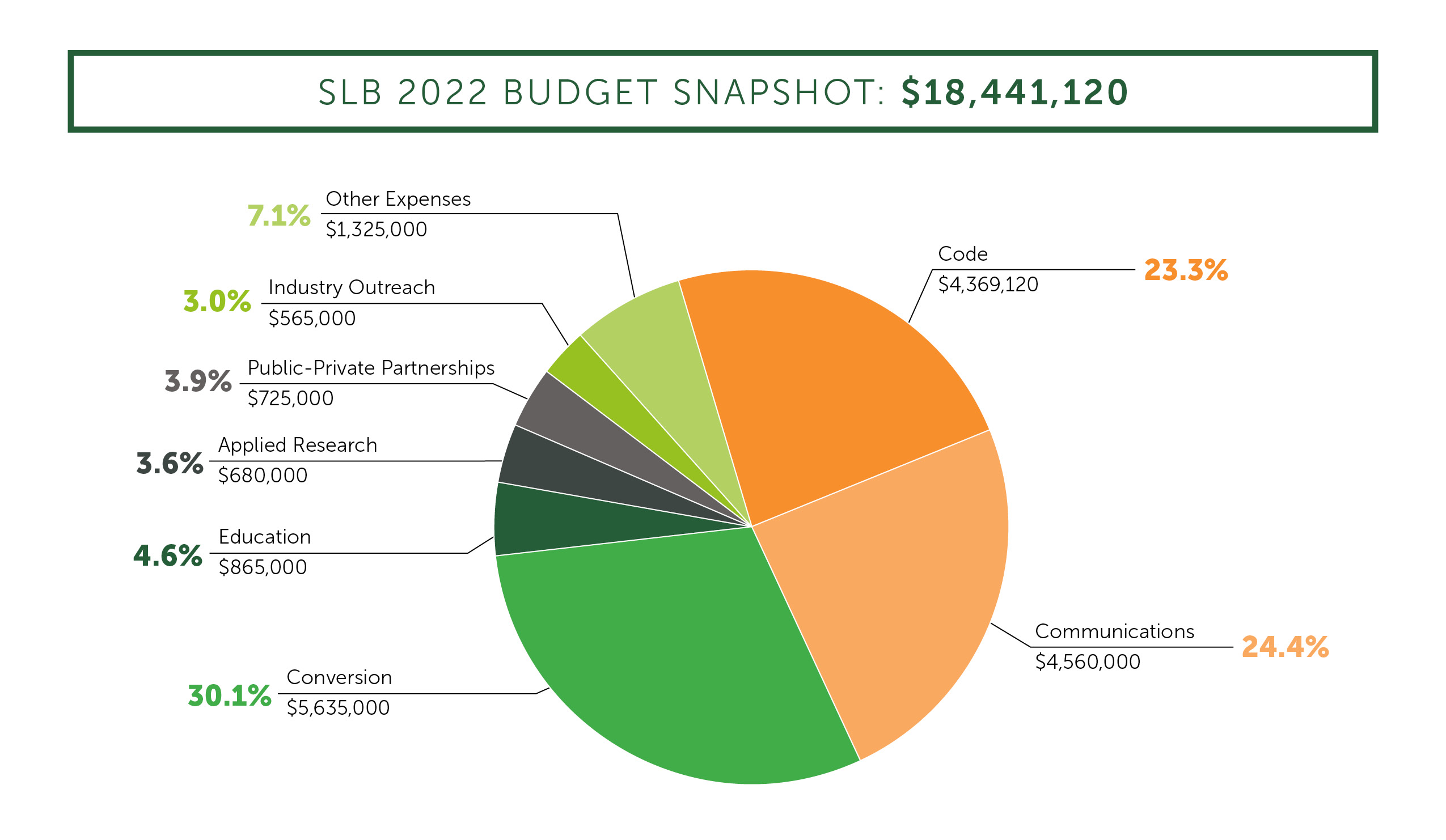HIGHLIGHTS
PROGRAM UPDATES
Think Wood Video Series Tells Wood’s Sustainability Story From Seedling to Sawmill to Project Site 2024 IBC Expected to Allow Fully Exposed Mass Timber Ceilings in Type IV-B AWC-Hosted Webinar Presents Industry Efforts to Improve Carbon Transparency WoodWorks Keeps Wood’s Carbon Benefits Center Stage The AWC Elects New Officers The AWC Welcomes New VP, Markets & SustainabilityINDUSTRY NEWS
MIT Team Develops Tools to Support Low-Carbon Truss Construction Real Estate Market Affected by Global Supply Chain Challenges Carbon Considerations Among the Trends Affecting Commercial Real Estate Custom Home Builds Hit 13-Year High PBS NewsHour Visits Milwaukee’s Ascent Timber TowerINSIGHTS ON THE COMPETITION
New Research Shows Pathway to Decarbonize Steel Bamboo, Complement and Possible Future Competitor to Mass TimberProgram Updates
Think Wood Video Series Tells Wood’s Sustainability Story From Seedling to Sawmill to Project Site
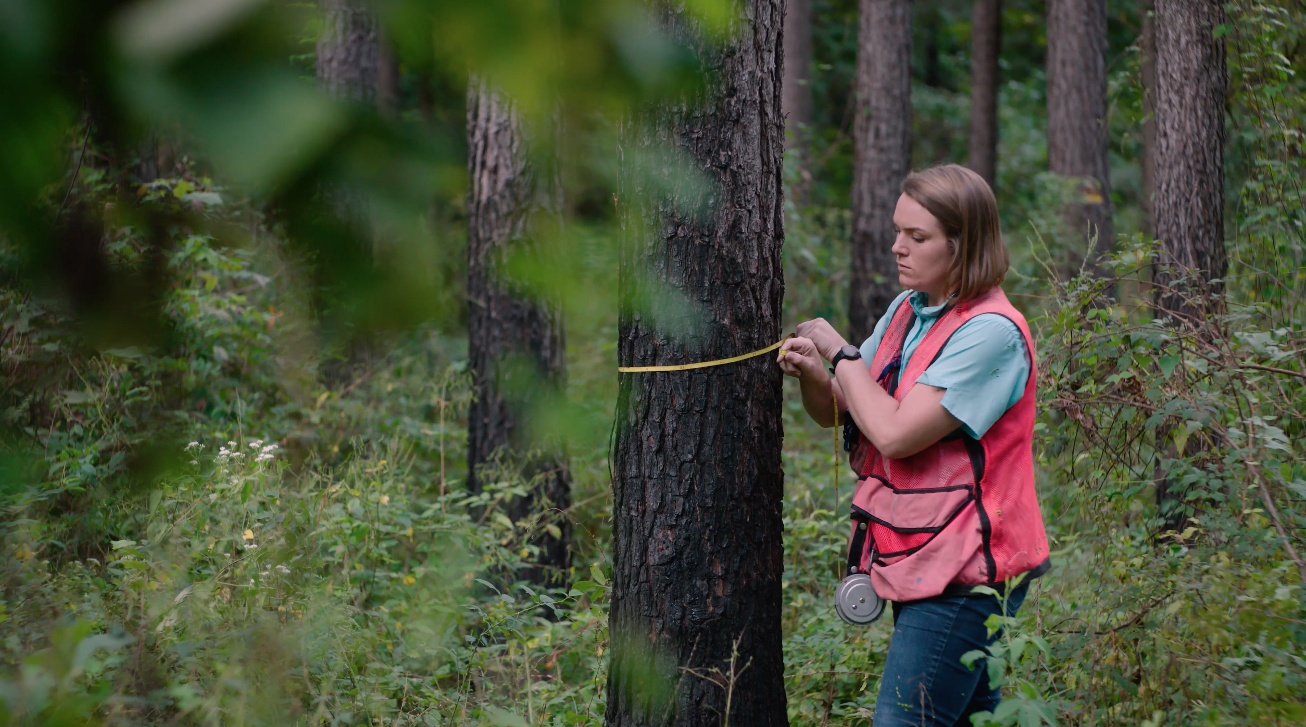
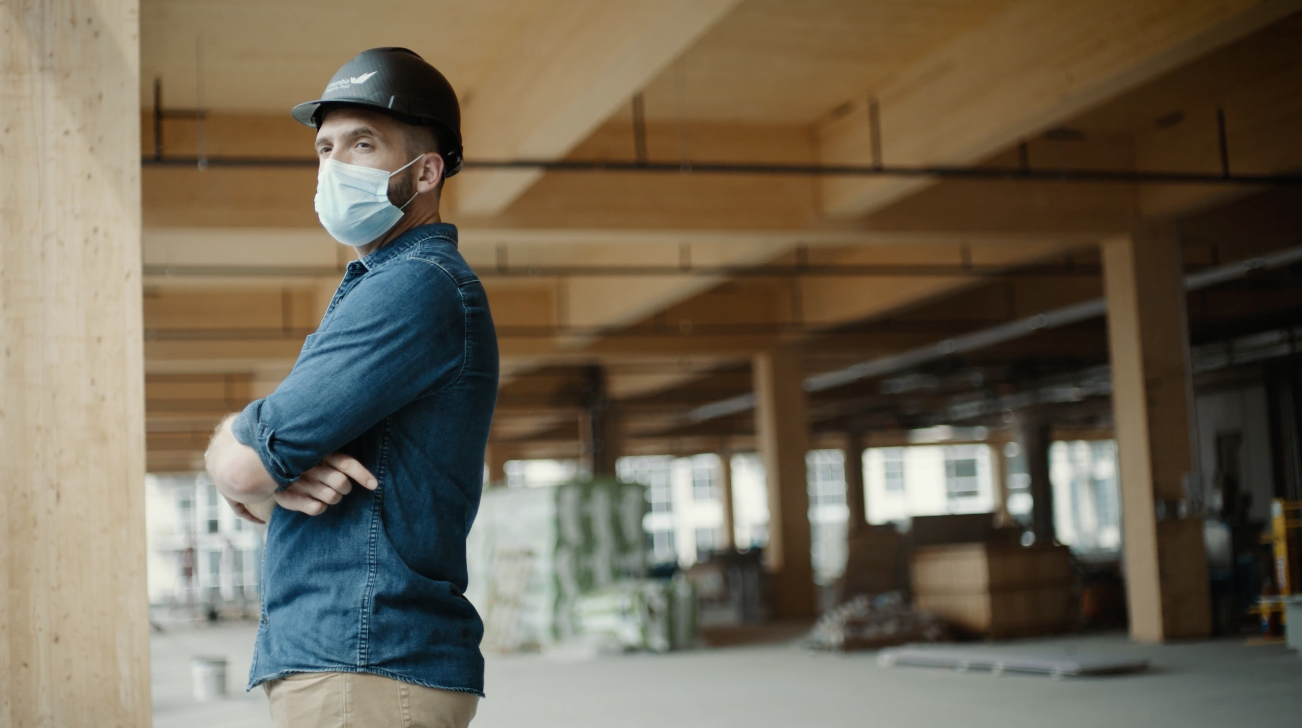
As the use of mass timber increases, so, too, do questions about wood’s sustainability. Even among those who are supportive of wood products, there is often little understanding of which sustainable forestry practices are in place in North America and their impacts on mitigating climate change and sustaining ecosystem services. Meanwhile, retailers, including major companies like Lowe’s and Home Depot, are placing an increasingly higher value on products that are sustainably sourced, which is an important selling point for their customers.
To address this knowledge gap, Think Wood commissioned a video series, Timber Sustainability, Seedling to Sawmill to Site, spotlighting professionals who know wood’s sustainable supply chain story firsthand: the foresters, manufacturers, and building professionals whose life’s work is to nurture and harvest forests, and design and build new structures in a sustainable manner.
The newly launched series follows lumber’s journey from seedling to sawmill to site, which in this case means a stop at The Westervelt Company’s Alabama tree nursery, forest, and production site, followed by a stop at 80 M Street in Washington, D.C., which features D.C.’s first mass timber commercial overbuild, designed by Hickok Cole for developer Columbia Property Trust. Throughout the journey, the series showcases how environmental stewardship and commitments are honored and central in the development and application of wood building materials. Think Wood will continue to develop resources and assets with this messaging in 2022.
Similar to Think Wood’s top-performing Legacy video, which amassed more than 107,000 views in October and November, Think Wood anticipates that its new series will perform well on digital channels as well as during conferences and public events, and serve as a resource to build confidence in wood among architecture, engineering, and construction professionals, as evidenced by this quote:
“We’re planning to share the Think Wood Legacy video with C-suites to promote the T3 development we’re launching with Hines in Chicago.” – Jessica O’Hara, Senior Vice President | Stream Realty Partners
Watch the Timber Sustainability series here and share with your networks today.
2024 IBC Expected to Allow Fully Exposed Mass Timber Ceilings in Type IV-B
The AWC has produced several wins for the softwood lumber industry in the 2024 International Building Code (IBC) and International Fire Code (IFC), according to the preliminary results of ICC Group A Code Development voting. Pro-wood changes include provisions to:
- Allow for fully exposed mass timber ceilings in buildings up to 12 stories, which is premised on the outcomes of AWC-led fire research and will replace provisions that allow for no more than 20% exposed mass timber ceilings in Type IV-B construction.
- Push back the application of non-combustible floor covering to a later point in the construction process, which is expected to reduce construction costs without increasing fire risk.
- Enable gypsum wallboard ceilings to contribute to fire-resistance ratings of exterior walls, which will maintain platform as a viable framing technique in multifamily construction and keep construction costs down.
The ICC Board of Directors will soon meet to confirm the voting results. The AWC is already beginning to incorporate these changes into its communications and outreach to building code officials and industry professionals to support their uptake in projects nationwide. For example, in the November issue of Structure Magazine, the AWC’s Ken Bland touched on 2024 code changes in addition to detailing common approaches to incorporating the 2021 IBC tall mass timber provisions into state and local building codes.
AWC-Hosted Webinar Presents Industry Efforts to Improve Carbon Transparency
The AWC concluded its virtual, three-part Sustainability Series by hosting more than 400 attendees at a November webinar that explored progress in developing a Fiber Sourcing Transparency tool and an A4 Transportation tool to support the industry in creating a more complete accounting of the carbon impact of wood products and their role in mitigating carbon emissions. The development of both tools is being supported by the SLB and the U.S. Endowment for Forestry and Communities. During the webinar, the National Alliance of Forest Owners also shared its Forest Carbon Data Visualization microsite, which helps to break down and interpret data related to carbon sequestration, storage, and emissions.
Market research by Think Wood has confirmed that climate change and carbon are foremost on the minds of the design and building communities. The SLB is investing in the development of fiber sourcing and transportation tools, as well as a woodshed tool, as key vehicles to improve reporting transparency and ultimately motivate increased use of wood products, thanks to their comparative climate benefits.
WoodWorks Keeps Wood’s Carbon Benefits Center Stage
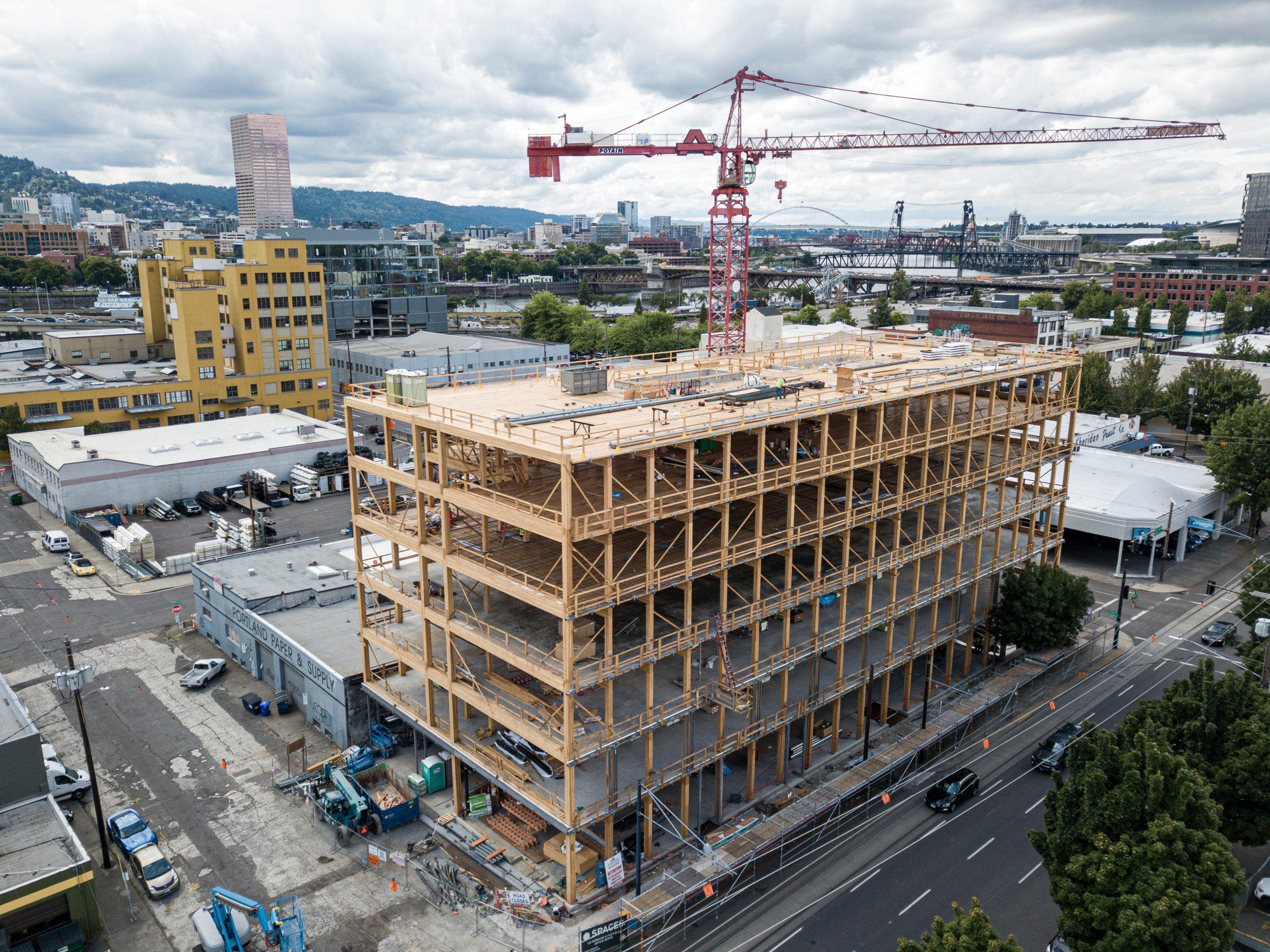
WoodWorks is making new and concerted efforts to promote wood’s role as a natural climate solution in its outreach and education activities and as a key differentiator compared with more carbon-intensive building materials, such as concrete and steel.
For example, at the recent 2021 Greenbuild International Conference + Expo, WoodWorks’ CEO, Jennifer Cover, and its VP of Operations, Bill Parsons, joined Cynthia West, the Director of the U.S. Forest Service’s Forest Products Laboratory and Northern Research Station, on a panel where they discussed the benefits of wood construction and the positive impacts that strong markets have on overall forest management and health, thus enabling greater net-carbon storage.
WoodWorks staff shared similar messaging about carbon, forestry, and tall wood during a presentation to AIA California and the Southern California Sustainability Committee on Wood Products, Forestry, and Sustainability.
Though other industries’ efforts to reduce their carbon emissions are laudable, wood’s renewable nature and inherent carbon sequestration and storage abilities offer an unparalleled advantage as policy makers, the design community, and society at large prioritize more sustainable, climate-friendly building solutions.
Photo: District Office, credit: Hacker
The AWC Elects New Officers
The AWC’s Board of Directors recently elected its 2022 slate of officers—Eric Cremers, President and CEO of PotlatchDeltic, will serve as Chair; Ricky Stanley, President and CEO of TR Miller Mill Company will serve as First Vice Chair; and Sean McLaren, West Fraser’s President, Solid Wood, will serve as Second Vice Chair.
Other members of the AWC’s 2022 Board of Directors are Mike Blosser, LP Building Solutions; Marc Brinkmeyer, Idaho Forest Group; Furman Brodie, Charles Ingram Lumber Co.; George Emmerson, Sierra Pacific Industries; Jack Jordan, Jordan Lumber; Nate Jorgensen, Boise Cascade Co.; Fritz Mason, Georgia-Pacific; Kevin McKinley, Canadian Wood Council; Andrew Miller, Stimson Lumber Co.; Grady Mulbery, Roseburg Forest Products; Keith O’Rear, Weyerhaeuser Company; Joe Patton, The Westervelt Co.; Fred Stimpson, Canfor Southern Pine; and Duane Vaagen, Vaagen Brothers.
The Board also voted to amend the AWC’s bylaws to extend the Chairperson’s term from one to two years, beginning with Cremers’ term in 2022.
The AWC Welcomes New VP, Markets & Sustainability

The AWC has welcomed Rachael Jamison as its new Vice President of Markets and Sustainability. Jamison comes to the AWC with more than 20 years of experience in environmental management, sustainability, and compliance, including extensive work in the U.S. forestry sector. She was most recently the Director of Environmental Programs at the Port of Olympia; before that, she managed corporate sustainability and carbon-emissions reporting for Weyerhaeuser as its Manager of Sustainable Forestry and served as a Senior Policy Analyst for the Washington State Department of Natural Resources.
In her new role, Jamison will help the AWC to better position wood as a leading solution to reduce carbon emissions in the built environment as well as provide technical advice on building codes, standards, policies, regulations, and regulations related to the use of wood. The SLB is looking forward to its continued partnership with the AWC and Jamison on these critical industry opportunities.
Industry News
MIT Team Develops Tools to Support Low-Carbon Truss Construction

A research team at MIT recently created a set of computational tools to support architects and engineers in minimizing embodied carbon in truss structures. The tools use topology optimization, which enables designers to input basic project parameters, such as loads and dimensions, to compute an optimal design to limit global warming impact. Optimization techniques are already commonly used to calculate characteristics such as weight and cost.
According to the findings, which were recently published in the journal Engineering Structures, MIT’s tools can help designers save between 10% and 30% of a truss’s embodied greenhouse gas emissions without sacrificing performance. MIT researcher and assistant professor Josephine Carstensen noted that the tools are “about choosing materials more smartly” for a given application. For example, where there is compression, wood is the ideal material both for its performance and for its carbon benefit.
Read more about MIT’s truss optimization tools here.
Real Estate Market Affected by Global Supply Chain Challenges

Realtor.com recently explored the causes of the global supply chain strain and its effects on the real estate—and especially home improvement—market. According to Robert Dietz, chief economist of the National Association of Home Builders (NAHB), supply chain issues are affecting “everything, including the kitchen sink… It’s the nuts and bolts, literally, to build a home.”
Realtor.com examined appliances, paint, furniture, labor, and lumber to illustrate real estate’s supply and demand challenges since the start of the pandemic. In the case of lumber, Realtor.com noted that tariffs introduced by the Trump administration prior to the pandemic had already caused prices to rise. Then, fast-forward to the spring and summer of 2020: The temporary closure of the U.S.-Canada border and surging demand for home improvement projects and new homes constrained supply and caused prices to increase. While lumber prices have since largely normalized, the price of other materials and services has risen, perpetuating the challenges for would-be homebuyers and remodelers.
Read more about Realtor.com’s analysis here.
Carbon Considerations Among the Trends Affecting Commercial Real Estate
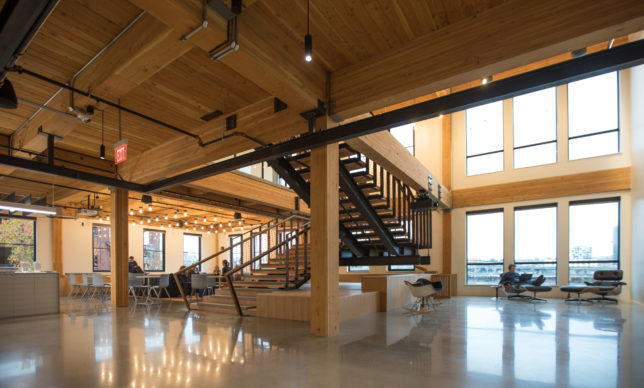
The pandemic created commercial real estate’s worst recession ever, and uncertainty over when and how workforces will return to the office continues to affect the market. With this in mind, the National Law Review honed in on five commercial real estate trends to track in the post-Covid world:
- Climate risk and carbon emissions laws will create considerations for developers and building owners regarding material selection, price, and retrofitting to reduce embodied and operational carbon in new construction and renovations. Pass-through costs associated with compliance will become crucial aspects of commercial lease negotiations.
- There will be a rise in short-term, flexible lease structures, including short-term extensions, and concurrently, force majeure definitions will be amended to better account for circumstances like pandemics.
- Companies and occupants will demand new office designs and types, including better physical attributes and amenities, to support employee recruitment and retention.
- Vaccination requirements will pose new challenges for property managers in terms of disclosures, contractual rights, and labor negotiations.
- Logistics, industrial, data centers, life sciences, and multifamily developments will be important short-term indicators of sector performance.
Read more about these commercial real estate trends here.
Custom Home Builds Hit 13-Year High
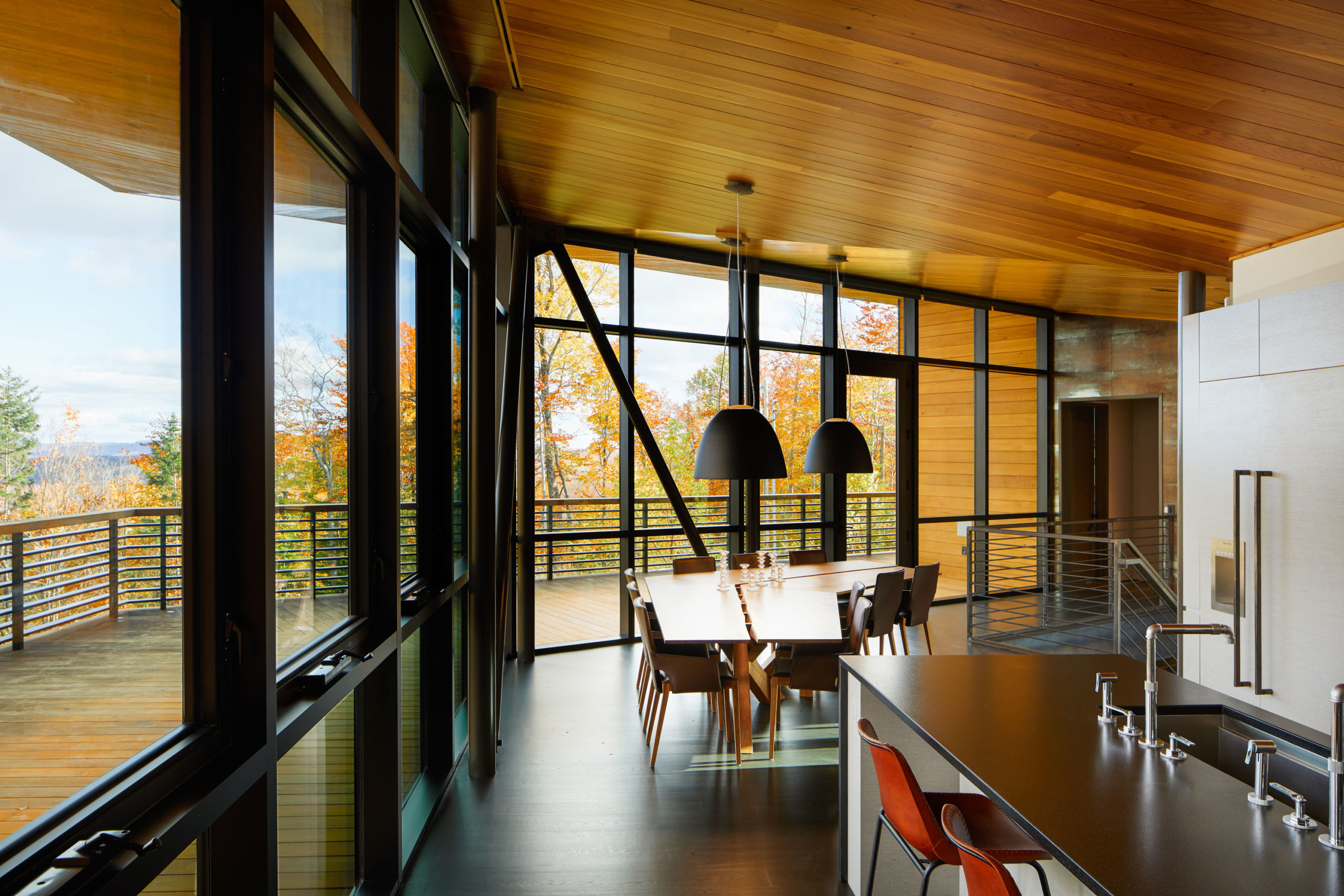
According to Forest Economic Advisors (FEA), U.S. Census Bureau data and an NAHB analysis show that custom homebuilding starts had their best quarter in Q3 2021 since the spring of 2008. There were 56,000 custom homebuilding starts in Q3 2021, a 5.7% increase year-over-year and part of a four-quarter trend that has registered an 8% gain from the previous four-quarter total. Despite these gains, overall custom homebuilding market share has declined over the past decade, now holding steady at 16.6% compared with 31.5% in Q2 2009. These overall declines are a result of the rapid expansion of other types of home building, including multifamily and build-for-rent.
Read more about this trend here.
PBS NewsHour Visits Milwaukee’s Ascent Timber Tower
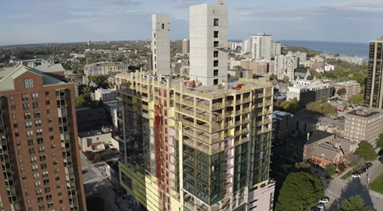
As part of an ongoing series, Peril and Promise: The Challenge of Climate Change, PBS’s NewsHour recently visited Ascent, the 25-story mass timber tower being erected in Milwaukee, and interviewed, among others, Tim Gokhman of New Land Enterprises, Ascent’s developer and WoodWorks board member, and Jason Korb, the architect.
Gokhman stressed Ascent’s multiple innovations from design, engineering, and fire safety points of view, while Korb stressed that his team was diligent in sourcing Ascent’s wood from sustainably managed forests to deepen the project’s climate impact. Korb also detailed the rigorous fire testing that he and his team undertook in partnership with the U.S. Forest Service to demonstrate mass timber’s safety in tall applications. In a first-of-its-kind test, the Ascent team and Forest Service burned nine wood columns in a furnace for three consecutive hours at temperatures upward of 2,000 degrees Fahrenheit to assess and assert the material’s fire safety, including in comparison to traditional materials.
Developer Gokhman is optimistic that Ascent will be the first of many tall mass timber projects, stating, “It’s not just my hope but my prediction that it’s a matter of time until the United States overtakes the rest of the world in the production and assembly [of mass timber] and in the use of buildings like this.”
Listen to NewsHour’s story on Ascent here.
Insights on the Competition
New Research Shows Pathway to Decarbonize Steel
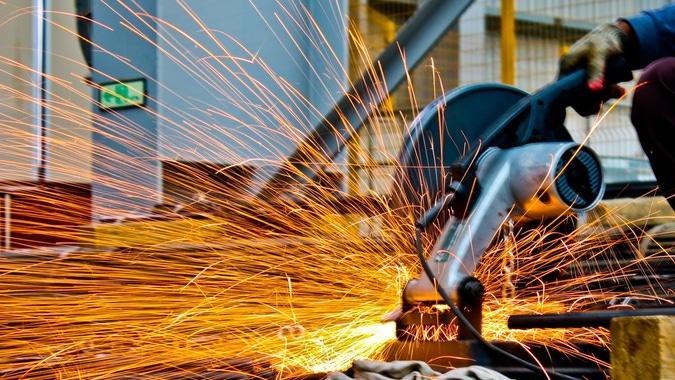
A new report from research firm BloombergNEF (BNEF), titled “Decarbonizing Steel: A Net-Zero Pathway,” concluded that steel production could almost completely eliminate its carbon emissions if production incorporates more hydrogen and recycling technologies. Steel production is currently responsible for 7% of global greenhouse gas emissions annually, making it one of the most polluting industries in the world. BNEF estimates that the industry will need to invest an additional $278 billion over the next three decades to realize a net-zero goal and, in the process, make substantial contributions to the net-zero aspirations of China, Japan, South Korea, and the European Union.
BNEF suggests that, by 2050, 45% of the steel market could be composed of recycled material, while green hydrogen, which will likely become the cheapest steel production method, could capture upward of 31% of the market. Currently, around 70% of steel is made in coal-fired blast furnaces.
Read more about steel’s efforts to decarbonize here.
Bamboo, Complement and Possible Future Competitor to Mass Timber

ArchDaily recently published an interview with Pablo van der Lugt, an architect whose research interests focus on the potential of bamboo and mass timber to decarbonize the construction sector and create circular built environments.
In speaking of bamboo, van der Lugt stresses its rapid growth cycle, suitability for managed production, carbon sequestration abilities, versatility, strength, and performance capabilities as distinct comparative advantages in structural and appearance applications. Much like mass timber, engineered bamboo boards, panels, and beams “hold a vast potential as a very hard, stable, and aesthetic finishing material for both indoors and outdoors.”
However, because of its newness, van der Lugt notes that structural uses of engineered bamboo are still largely overlooked in building codes, thus limiting its use. He suggests that future market growth for engineered bamboo could materialize if it is applied in combination with a bearing structure in mass timber, which he also praises as a viable, high-performance, and bio-based material.
Read more from van der Lugt here.
Industry Resources
FEA’s Housing Dashboard
This housing dashboard is provided compliments of Forest Economic Advisors (FEA):
View the November Dashboard
Virginia Tech’s Monthly Housing Report
This monthly housing commentary report is a free service of Virginia Tech and is intended to help one gauge future business activity in the U.S. housing market.
October 2021 Reports (released in December 2021)
Part A: October Housing Commentary
Part B: October Economic Conditions


